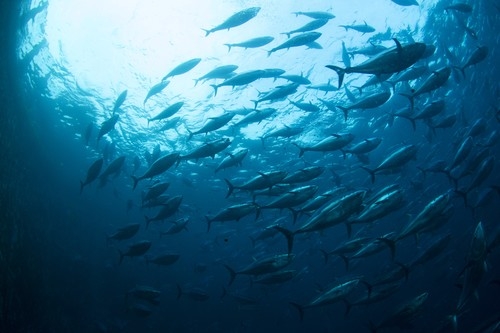
Skretting introduces new tuna diet
April 11, 2019
By Aquaculture North America Staff
Aquaculture nutrition solutions provider Skretting has developed a new diet aimed at helping tuna farmers avoid the biosecurity risks and sustainability issues associated with baitfish diets.

Now available in Japan, MaGro is a soft extruded feed for bluefin tuna that has been created using patented production technology. The arrival of the breakthrough is ideally timed for Japan’s tuna farmers, who are seeing rising consumer demand for Japanese bluefin in domestic markets and further afield, including Asia and North America.
MaGro is the result of more than 20 years of dedicated R&D at Skretting to establish a viable alternative to baitfish feeding protocols. During that time, Skretting evaluated several feed types – everything from wet mashes to a wide variety of sausage formats – and these appraisals led to the finding that a soft extruded diet was by far the best option for tuna farming moving forward. The resulting diet takes the specific nutritional needs of bluefin into consideration and delivers it in a form that the fish want to consume.
With a texture that is much softer than the pellets tailored for other fish farming sectors, MaGro still has a much lower water content than baitfish. As such, it offers a much better feed conversion ratio. The formulation is also very consistent, comprising fully-traceable ingredients, whereas the nutritional profile of baitfish can fluctuate dramatically depending on the species of baitfish used, when and where it was caught, and the storage system used. Baitfish also needs to be frozen – from the point of being caught through to the point of being fed to the tuna, which in itself requires freezing and thawing systems to be in place.
Furthermore, the practical, easy-to-use format of MaGro means that farmers can utilise semi-automatic “canon” feeding systems, which also support much more efficient, cost-effective production. Such user-friendly systems contribute to feed and manpower savings, while also diminishing water pollution.
Advertisement
- Cermaq looks to expand on Canadian East Coast
- North Carolina’s shellfish mariculture industry gets new facility





